Source: Peter Chesson, Department of Life Sciences & Research Center for Global Change Biology, NCHU Chiou-Rong Sheue, Department of Life Sciences, NCHU
From Concrete to Nature: Rewilding Zhong Gua River
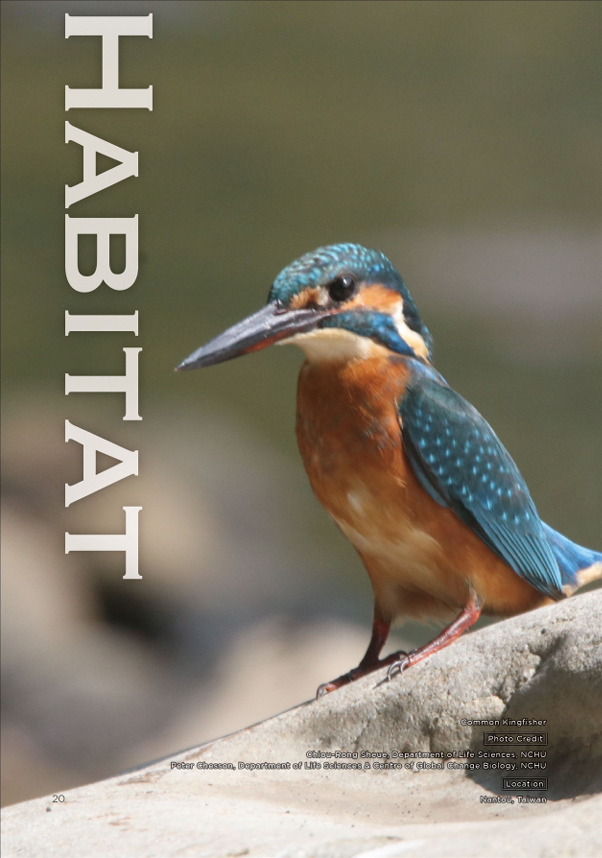
►The Eurasian kingfisher (Alcedo atthis) has benefited from all the emergent rocks where it can perch to look for fish.
Taiwan has many beautiful streams and rivers teaming with wildlife, but too often they are not respected for their natural values. Instead, they are often treated as risks needing to be controlled with concrete structures that interfere with their natural functions. As a consequence, stream habitats in Taiwan are greatly at risk, limiting the potential for recovery of many rare and threatened aquatic species and ecosystems. Surveying the small river, Zhong Gua River (種瓜溪), adjacent to their property in Nantou County, NCHU Professors Chiou-Rong Sheue and Peter Chesson were dismayed by how 4-6 m high concrete walls and various weirs, high and low, had interfered with the natural flow of the water, creating extensive silted areas full of invasive African elephant grass. The natural habitat for many native species was gone, and Zhong Gua River had become a concrete canyon dangerous for both people and wildlife that tried to access the river or cross it.
Learning of their concerns, Observer Environmental Consulting Company offered to help Sheue and Chesson solve these problems. They appealed to the Agency for Rural Development and Soil and Water Conservation (ARDSWC) to remove the walls and modify the weirs to make them more environmentally friendly. The idea gained support from both the environmental community and the scientific community seeking solutions to serious environmental problems resulting from channelizing streams with concrete. ARDSWC was ultimately convinced, and starting in March, 2023, began removing the wall along Zhong Gua River and restoring the habitat.
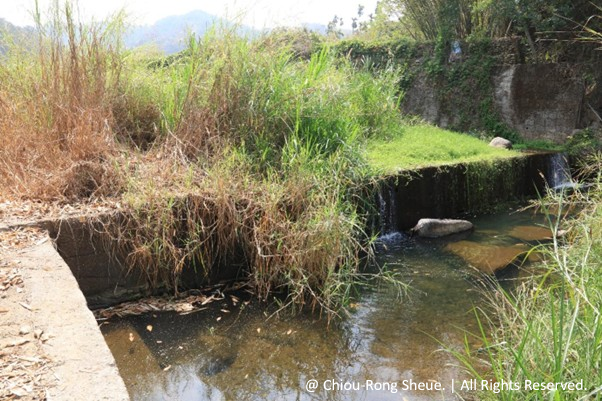 |
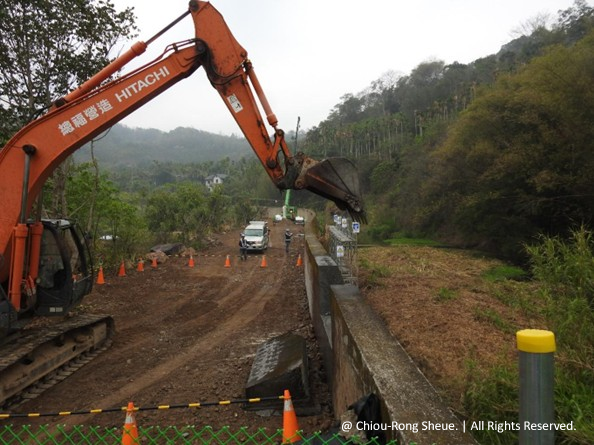 |
 |
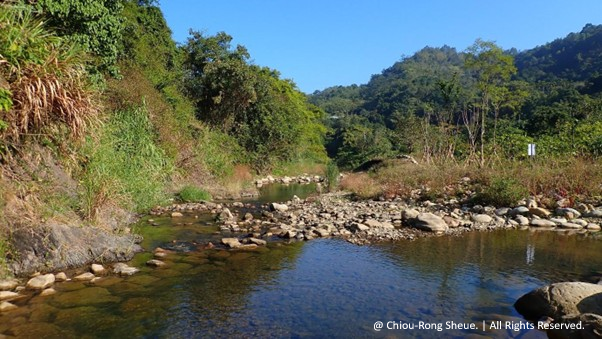 |
| 1. The river as it was choked with elephant grass and barely able to flow. ► | 2. The wall starts coming down, March 2023. ► | 3. Reconstructed weir, now friendly to aquatic organisms, and bottom left, rocky plant covered bank that was previously a concrete wall four meters high. ► | 4. The recreated natural stream structure with pools, riffles and sloping vegetated banks. |
Phase I of the project, the removal of the first 186 m of wall, along with weir and habitat reconstruction, was completed a year ago (October, 2023), and Phase II, involving another c. 150 m of wall, is approaching completion. Results were immediately observable. Diverse native aquatic animals colonized and began breeding in the newly reconstructed habitat. Many native aquatic plant species began colonizing too, both on the newly restored rock and soil stream banks and in the bed of the stream. Gone are the stagnant areas that were previously created by concrete weirs and thickets of elephant grass. And gone are the extensive silted stretches where the elephant grass choked the river. Instead, the stream has returned to its natural state with highly diverse habitat able to support a high diversity of species.
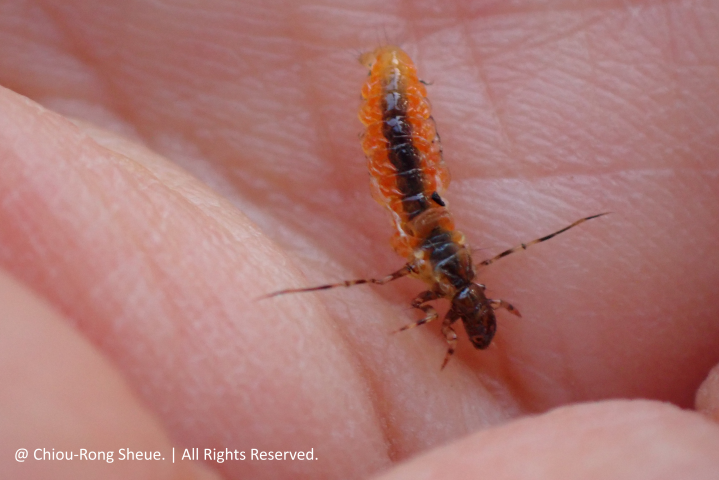
►A striking caddisfly larva that cuts leaves to make a case,
which it uses to protect its body as it crawls around Zhong Gua River scraping food from the rocks.
Without the walls and concrete barriers, water flow is more variable, with fast flows preferred by some adult native fish and a number of aquatic insects, and slow flows among rocks near the edge preferred by fish larvae, shrimps, some aquatic insects and water snails. Rocks emerging from the water are now perches for beautiful damselflies and dragonflies. The iridescent common kingfisher is seen flitting from rock to rock in search of fish, and several birds, including two wagtail species, use these rocks as convenient perches too. Up to four species of heron (the night heron and three egrets), can be seen wading in the shallows, while the spot-billed duck prefers the several deep pools within the stream. And plant diversity has gone from just two invasive species to nearly forty native and naturalized aquatic and riparian species, including some rare and endangered species.
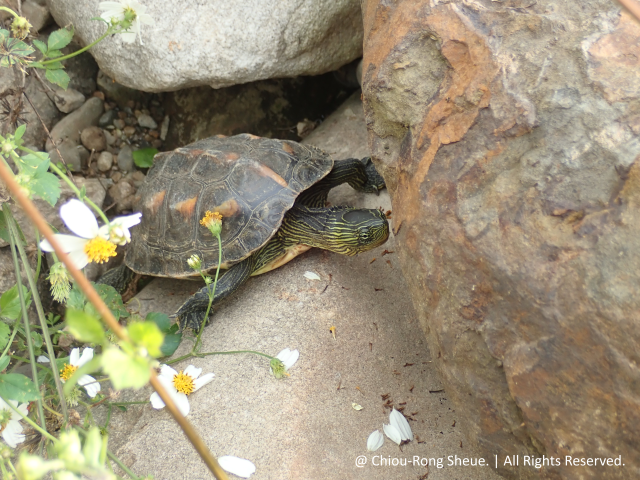
►A golden thread turtle (Mauremys sinensis) exploring the newly accessible banks of Zhong Gua River.
Local residents, initially skeptical, now appreciate their rewilded river as a beautiful asset. It has also become a place for teaching and study, attracting more than 800 visitors in the last year. Classes come to learn about aquatic ecology and stream functioning, while researchers study the restoration of the ecosystem and the natural stream flow. Sheue and Chesson hope that this successful project marks just the beginning of stream restoration in Zhong Gua River and Taiwan as a whole, revitalizing these rich aquatic ecosystems.
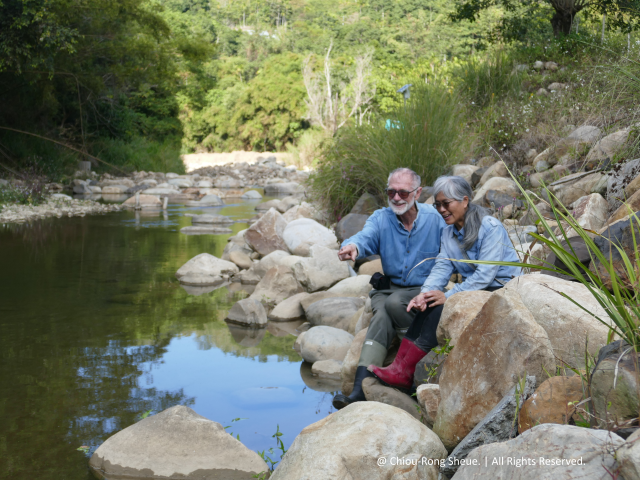
►Peter Chesson and Chiou-Rong Sheue observing juvenile fish at the rewilded Zhong Gua River.


